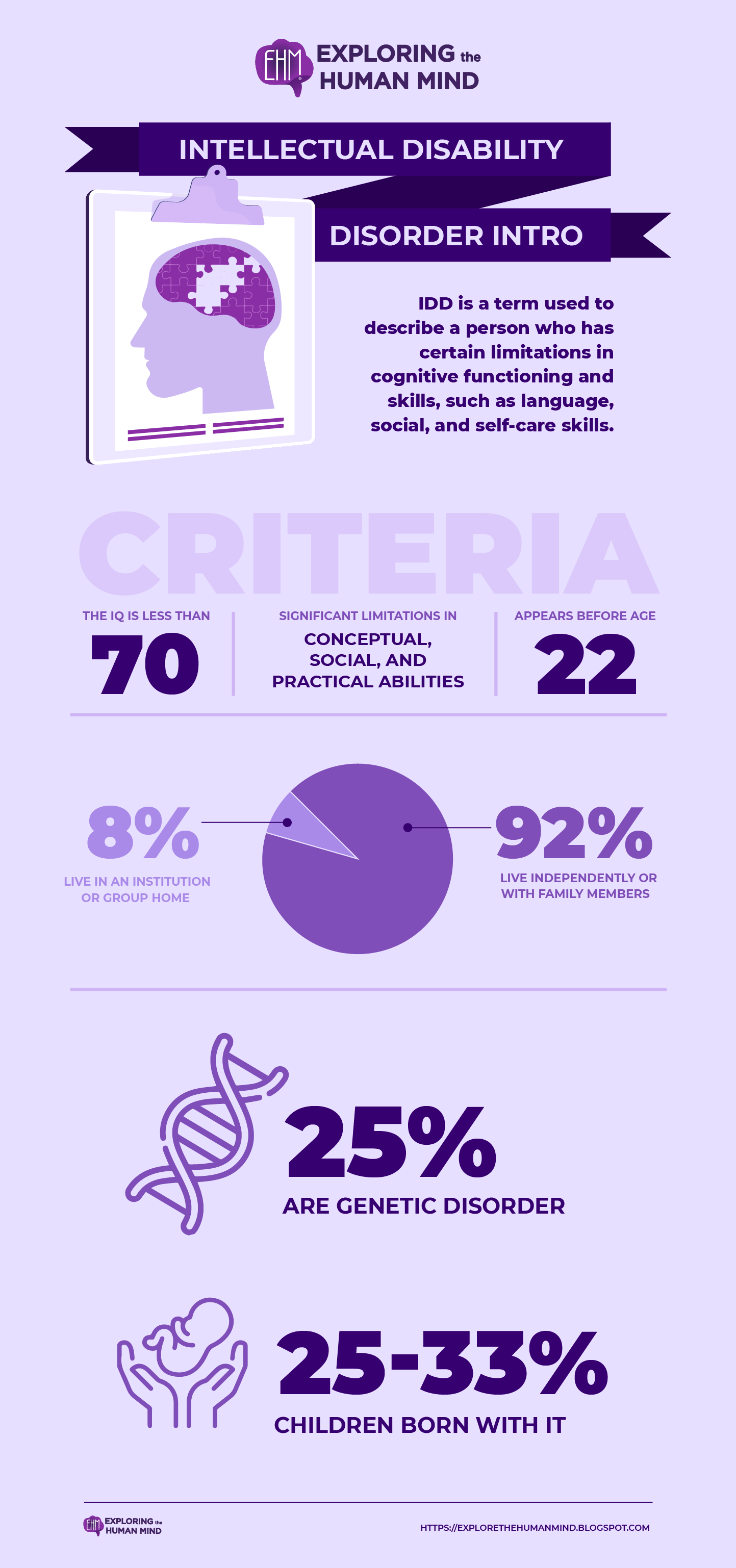Intellectual Developmental Disorders Intro
IDDs are birth differences that have a distinct impact on the trajectory of an individual's physical, intellectual, and/or emotional development. Many of these conditions have multiple effects on different body parts or systems.
It may be useful to consider IDDs in terms of the body parts or systems they affect, as well as how they occur. As an example:
- Nervous system These disorders have an impact on how the brain, spinal cord, and nervous system work, which can have an impact on intelligence and learning. Can also cause behavioral disorders, speech or language difficulties, seizures, and movement difficulties.
- Sensory systemThese disorders affect the senses (sight, hearing, touch, taste, and smell) or the way the brain processes or interprets sensory information.
- Metabolism These conditions have an impact on how the body uses food and other materials for energy and growth. Problems with these processes can disrupt the balance of materials available to the body for proper function.
- DegenerativeIndividuals with degenerative disorders may appear or be typical at birth and may meet typical developmental milestones for a time, but the condition causes disruptions in skills, abilities, and functions.
We know that intellectual disability is not contagious: you cannot catch it from someone else. We also know it isn't a mental illness like depression. There are no treatments available for intellectual disability. Children with intellectual disabilities, on the other hand, can learn to do a variety of things. They may simply need to take their time or learn in a different way than other children.
An individual has an intellectual disability if he or she meets three criteria, according to the American Association of Intellectual and Developmental Disabilities:
- The IQ is less than 70
- Adaptive behavior has significant limitations in one or more of the following areas: conceptual, social, and practical abilities
- The condition appears before the age of 22

vectors by Freepick; graphic design by Vadot
Facts:
- A genetic disorder is responsible for approximately 25% of cases of mental disability
- Adults with mental disabilities live independently or with family members 92% of the time, while 8% live in an institution or group home
- The cause of mental disability is unknown in approximately 25 to 33% of children born with it
- An estimated 4.6 million people in the United States have an intellectual disability.
Reference:
About Intellectual and Developmental Disabilities (IDDs). (2021, November 9). Https://Www.nichd.nih.gov/. https://www.nichd.nih.gov/health/topics/idds/conditioninfo
11 Interesting Facts About Mental Disability. (2016, April 13). Pearlbuckcenter.com. https://pearlbuckcenter.com/11-interesting-facts-about-mental-disability/#:~:text=More%20than%20250%20causes%20of,FAS)%20and%20is%20totally%20preventable. What is Intellectual Disability? (2018, July 25). SpecialOlympics.org; SpecialOlympics.org. https://www.specialolympics.org/about/intellectual-disabilities/what-is-intellectual-disability#:~:text=Approximately%201%20%E2%80%93%203%20percent%20of,common%20in%20low%2Dincome%20countries.
What is Intellectual Disability? (2018, July 25). SpecialOlympics.org; SpecialOlympics.org. https://www.specialolympics.org/about/intellectual-disabilities/what-is-intellectual-disability#:~:text=Approximately%201%20%E2%80%93%203%20percent%20of,common%20in%20low%2Dincome%20countries.






Comments
Post a Comment